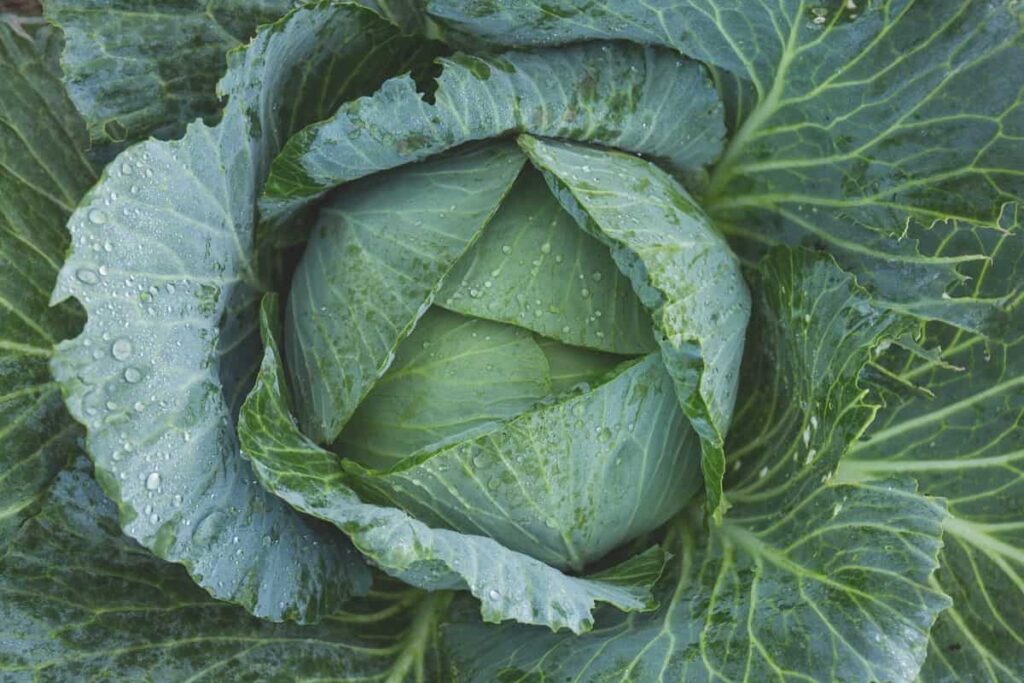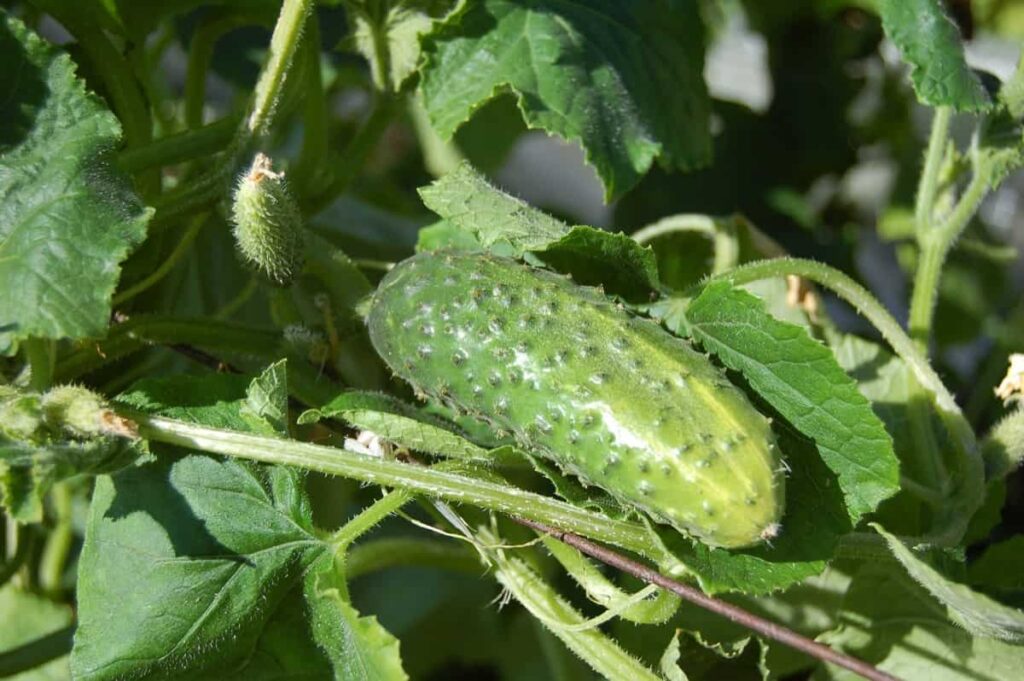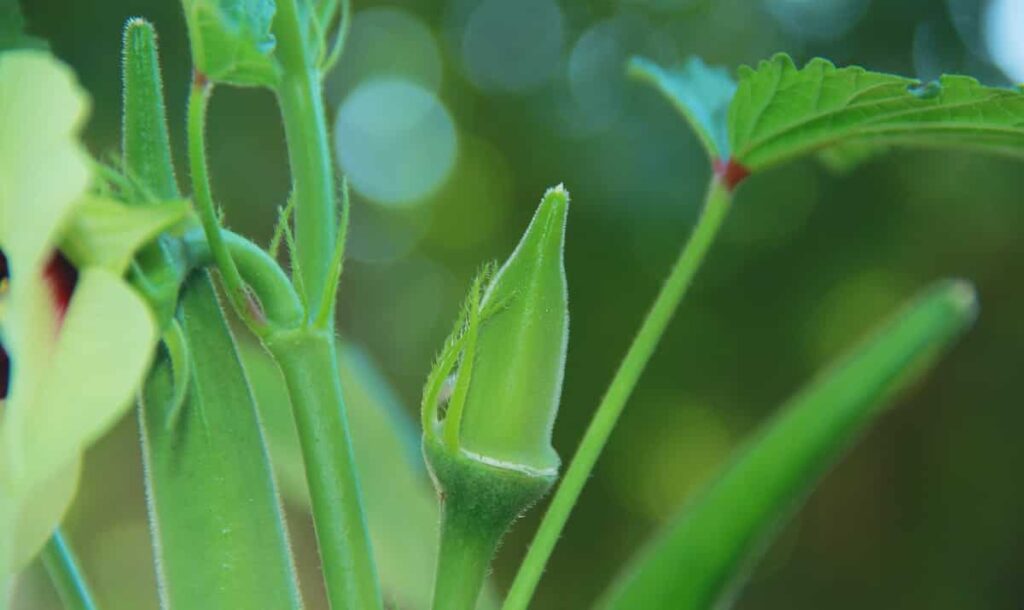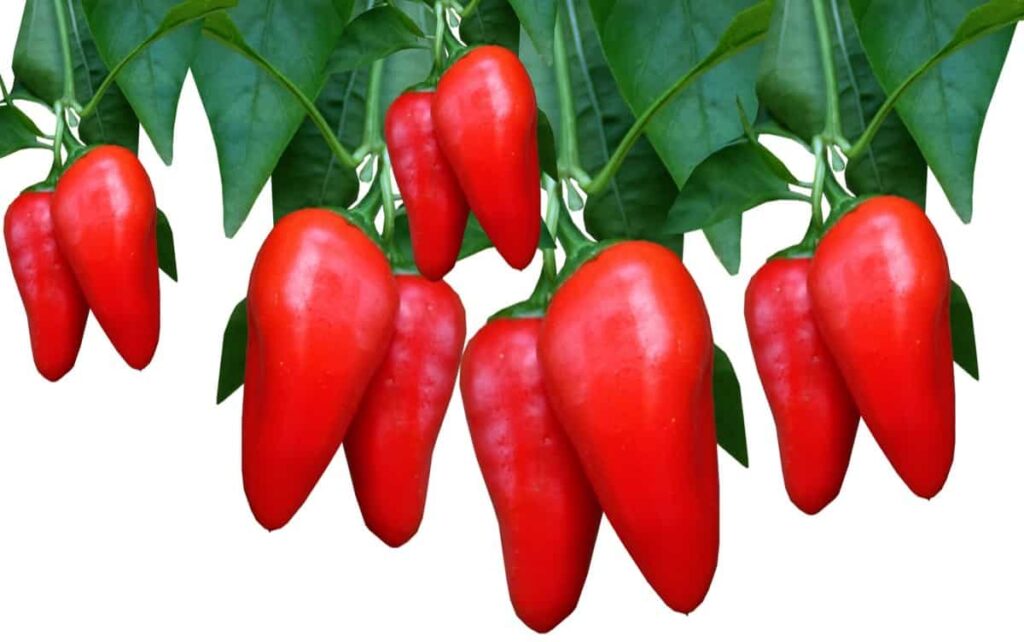Vegetables are a healthy and inexpensive addition to any family’s diet, and a well-planned garden can give an abundance of these vegetables. Maintaining a healthy vegetable garden requires much labor, but the time spent outside benefits everyone’s health. Below we learn the New Mexico vegetable planting calendar, month-by-month vegetable planting chart, seasonal vegetable planting guide, what vegetables grow best in New Mexico, and the hardiness zones of New Mexico.

New Mexico vegetable planting calendar (NM)
Growing vegetables in New Mexico
Compared to other states, New Mexico’s growing season is much more extended. On the other hand, the little rainfall in this area makes some crops more viable than others. Grow some flavorful herbs in pots. The temperatures of New Mexico are ideal for the growth of many types of vegetables, including beets, cabbage, tomatoes, sweet corn, carrots, cucumbers, potatoes, garlic, potatoes, radishes, and sweet peppers.
Climate zones of New Mexico
Most of New Mexico has a dry to semi-arid climate, although the state also has continental and alpine regions. Planting zones in New Mexico often see a lot of sunshine, little precipitation, and low humidity. In the north, annual temperatures average in the 40s, while in the southeast, they average in the middle 60s.
The eastern Great Plains of the state are similar to the eastern Colorado high plains. The state receives around 14 inches of rain annually on average. During the summer, low-lying areas can experience temperatures in the triple digits. It’s not uncommon for overnight lows to fall into the teens or lower throughout the winter.
Planting zones of New Mexico
Plant hardiness zones, sometimes known as “growing zones,” are used to determine which types of plants and vegetables best suit a particular state area. They help figure out what and when to plant. The first and latest frost dates are used to determine planting zones in New Mexico. When plants can be planted outside, depending on their frost resistance, is specified for each zone. The climate of New Mexico varies greatly from zone 4b to zone 9a.
A planting zone map is available online to help you determine what growing zone you are in for New Mexico. You can safely plant anything hardy in the zone in which you want to grow it or a lower zone. For instance, in zone 4b, you can plant just about everything that is hardy in zones 1 through 4. Don’t try to force anything meant for a warmer zone into your colder one, as it will have a much harder time making it through the winter.
When should I plant my garden in New Mexico?
It would help if you considered your garden to be three separate in one: spring, summer, and autumn. When to plant each kind of vegetable depends on its hardiness and the desired harvest time. Planting times for warm-season crops should be delayed until all risk of frost has passed in the spring, whereas planting times for hardy cool-season crops may begin as early as the spring or as late as the summer for an autumn harvest.
In case you missed it: How to Grow Cucumber Plants Faster: Best Tips to Increase Flowering, Fruiting, and Production Yield

What kind of vegetables can you grow in New Mexico?
The growing season in New Mexico lasts longer than it does in other states. Some crops, however, are more suited to this region than others due to the low moisture. Plant some tasty herbs like basil, cilantro, mint, oregano, etc. The temperatures of New Mexico are ideal for the growth of many types of vegetables, including beets, cabbage, tomatoes, sweet corn, carrots, cucumbers, potatoes, garlic, potatoes, radishes, and sweet peppers. When planning your garden, you shouldn’t just throw seeds in randomly. Careful planning is the key to a flourishing garden.
Can you grow sweet potatoes in New Mexico?
While the state’s namesake chile pepper gets all the glory in the kitchen, New Mexico is a fertile growing ground for more underappreciated crops like the sweet potato. Growing sweet potatoes is a sensible addition to many garden plans for several reasons. Sweet potato greens are delicious in summer sauces and stir-fries, thrive in sandy soil and may be used as a ground cover in polycultures.
Growing sweet potatoes does not call for a green thumb. If you want to grow sweet potatoes, you can’t just plant the tuber’s root or parts of the tuber’s root as you would with an ordinary potato. Instead, you should let the sweet potato sit out to sprout and then plant the resulting “slips” (approximately five to eight inches in length).
In case you missed it: How to Start Brinjal Farming/Eggplant in West Bengal: Planting to Harvesting Guide for Beginners.

Can you grow tomatoes in New Mexico?
Growing tomatoes, a famous garden food, in New Mexico can be tricky. Tomato plants often fail to bear fruit due to a number of causes. Many species, especially those with bigger fruit, cannot produce fruit when temperatures are high. If it’s too hot, the pollen melts, and the flower won’t be fertilized. Keep the plants in the shade to protect them from the sun’s rays. The optimal sunlight for tomatoes is between 4-6 hours each day.
How long is the growing season in New Mexico?
If you know when your area typically has its first and final frosts, you will be able to sow the seeds for your vegetables at the appropriate times. The USDA plant hardiness zones that cover New Mexico range from 4-9. On average, there are roughly 150 days that pass in New Mexico between the state’s last and first frost.
What zone is Albuquerque for planting?
According to the USDA hardiness zone map, you can plant cool-weather crops as early as February. Seedlings can be started within 6-8 weeks before the first frost to give them a head start. In Albuquerque, annuals can be planted in the ground in April. Again, verify the specifics of your location since frost timings can vary significantly from one year to the next and even within a given year.
When to plant onions in New Mexico?
New Mexico’s onion transplanting season runs from around the middle of January until about the middle of March. Although many different kinds are planted, those that take the longest to mature include the short-day and intermediate types. Spring-seeded intermediate cultivars with a maturity date of early July tend to be small and provide low yields.
To maximize their growth and output potential, intermediate-day onions are often transplanted. As they reach maturity before their spring-seeded counterparts, transplanted intermediates serve as a transitional crop between the autumn and spring harvests.
When to plant corn in New Mexico?
Sweet corn has a longer suggested planting window from late March to July in warmer locations, with a harvest window of roughly 60–100 days, depending on the variety. Understanding the optimal time for harvesting is crucial. The silks on sweet corn should be removed when they become brown and dry, the kernels should be plump, and the liquid within should be a milky tint. Waterier liquids might still be too soon for use. To avoid picking all of your sweet corn at once, it’s best to space out your crops over many weeks or choose varieties with varying harvest windows.
In case you missed it: How to Grow Okra Plants Faster: Best Tips to Increase Flowering, Fruiting, and Yield

What can I plant now in New Mexico?
Spring vegetable gardening in New Mexico
We can plant a broad range of seeds in the garden and greenhouse in New Mexico. Vegetable gardeners can enjoy the fruits of their labor with frost-tolerant spring veggies such as peas, cabbage, spinach, carrots, broccoli, kale, arugula, radishes, cilantro, scallions, cilantro, and lettuce if they prepare ahead. Vegetables that grow best in the autumn are comparable to those that do best in the spring. When the weather becomes hot, these plants wilt and either go to seed or have an undesirable flavor or texture.
Spring planting requires understanding when and how to seed crops. While some seeds can be planted directly into garden soil, others are better off being started inside. Direct sowing is the method of choice for most legumes, root crops, and herbs. As soon as March soil can be worked, plant peas and spinach, and then a few weeks later, plant beets, radishes, carrots, dill, and cilantro.
Fall vegetable gardening in New Mexico
To prepare fresh vegetables for harvest in the cooler weather, you should plant your autumn garden mid to late summer in New Mexico. For an autumn harvest, plant broccoli and other crops in late July. Check the back of the seed packets or the labels on the seedling containers to estimate when the crop will be ready for harvest. If you just have a limited garden area, you’ll need to plan to choose which spring and summer crops will be harvested first so that you can make room for your autumn garden.
However, planting Brussels sprouts in the autumn in milder latitudes allows for a harvest as early as April. Beans of every kind are easy to grow and yield heavily right up to the first frost. They thrive in the spaced-out watering and fertilizing of succession planting. Among the best autumn crops are beets. Plant seeds in the ground; soaking the seeds overnight before planting can improve germination rates.
In case you missed it: How to Grow Green Chilli Peppers Faster: Best Tips to Increase Flowering, Fruiting, and Production Yield

At only four weeks from seed to harvest, radishes are very fast-growing. Turnips are a simple crop to grow in the autumn and winter garden. Late summer/early autumn is the best time to plant seeds directly. Even more so than other autumn vegetables, collard greens can be grown with little trouble in just about any place. Direct sowing of green onions in late summer allows for a yield that lasts until early winter. The growing time for kohlrabi in the chilly season is just six weeks. Lettuce thrives in mild temperatures.
Sow seasonal salad seeds between August and October. Peas thrive in mild temperatures. For an October crop, choose a short-season variety and sow outside when the temperature has dropped to the 70s. Kale can be left in the garden throughout winter since it grows best in the cold temperatures that characterize the winter season. It’s possible to reap the benefits of direct seeding in the early autumn and continue doing so through the New Year’s celebrations and beyond.
Summer vegetable gardening in New Mexico
Some plants cannot withstand the heat of summer and die off, while others may not only survive but also flourish in such circumstances. These 12 heat-tolerant veggies are perfect for the summer garden. Instead of resisting nature, grow plenty of heat-tolerant, summer-producing crops.
However, many types of vegetables thrive in the summer heat and will provide you with abundant homegrown vegetables throughout the season. The following veggies should be grown in your summer garden if you want the greatest results: Tomatoes, sweet potatoes, okra, bell peppers, hot peppers, eggplants, cucumbers, corn, squash, southern peas, and beans are used in this dish. Sweet potatoes are also included.
Winter vegetable gardening in New Mexico
Protected outdoor seed starting is possible for many cool-season crops, including lettuce, cabbage, arugula, spinach, Asian greens, and many more. Mini greenhouses and a well-known seed germination technique can be used to start seedlings outside in extreme cold. Garden seedlings grown in one’s greenhouses at home significantly save time and money.
In case you missed it: How to Grow Dianthus in Your Garden: A Guide to Propagation, Planting, and Care

New Mexico Vegetable planting calendar/guide/chart/schedule
| Vegetables | Zone 4 | Zone 5 | Zone 6 | Zone 7 | Zone 8 | Zone 9 |
| Snap Beans | June to Mid-Sep | Mid-May to Sep | May to Mid-Oct | Apr to Mid-Oct | Mid-Mar to Oct | Mid-Feb to May |
| Lima beans | May | Mid-May to Sep | May to Mid-Oct | Apr to Mid-Oct | Mid-Mar to Mid-Oct | Mid-Feb to May, Sep to Nov |
| Beets | Mid-Apr to Jun, Mid-July to Sep | Apr to June, Mid-July to Mid-Oct | Mid-Mar to June, Mid-July to Mid-Oct | Mar to May, Aug to Oct | Mid-Feb to Mid-May, Mid-Aug to Mid-Nov | Feb to Apr, Mid-Sep to Nov |
| Broccoli | Apr to June, July to Mid-Aug | Mid-Mar to June, July to Oct | Mar to Mid-June, Mid-July to Oct | Mid-Feb to May, Aug to Mid-Nov | Feb to Mid-May, Aug to Nov | Mid-Jan to Apr, Mid-Aug to Mid-Dec |
| Brussel Sprouts | Mid-Apr to Mid-Oct | Apr to Oct | May to Oct | Mid-Apr to Mid-Sep | Apr to Aug | Mar to Jun |
| Cabbage | May to Mid-Oct | Mid-Apr to Oct | May to Oct | Mar to Mid-June, Mid-July to Oct | Mid-Feb to May, Aug to Mid-Nov | Feb to Mid-May, Sep to Mid-Dec |
| Carrots | Mid-Apr to June, Mid-July to Sep | Apr to Jun, Aug to Mid-Oct | Apr to June, Aug to Oct | Mar to Mid-June, Aug to Oct | Mid-Feb to May, Mid-Aug to Mid-Nov | Mid-Feb to May, Mid-Sep to Mid-Dec |
| Cauliflowers | May to Sep | Mid-Apr to Mid-Oct | Mar to Mid-June | Mid-Feb to May, Aug to Mid-Nov | Feb to Mid-May, Mid-Aug to Nov | Feb to Mid-May, Sep to Mid-Dec |
| Corn | June to Mid-Sep | Mid-May to Mid-Sep | May to Sep | May to Aug | Mid-Apr to Aug | Mid-Feb to May, Mid-Aug to Nov |
| Cucumber | June to Mid-Sep | Mid-May to Mid-Sep | May to Sep | May to Aug | Mid-Apr to Aug | Mid-Feb to May, Mid-Aug to Nov |
| Kale | Mid-Apr to June, Mid-July to Mid-Oct | Apr to June, Mid-July to Oct | Mid-Mar to Mid-June, Aug to Mid-Nov | Mar to May, Aug to Mid-Nov | Mid-Feb to Mid-May, Mid-Aug to Mid-Nov | Oct to Dec |
| Lettuce | May to June, Mid-July to Sep | Mid-Apr to June, Mid-July to Mid-Oct | Mid-Mar to Mid-June, Aug to Oct | Mar to May, Aug to Oct | Mid-Feb to May, Mid-Aug to Mid-Nov | Mid-Jan to Apr, Mid-Sep to Mid-Dec |
| Onions | Mid-Apr to Mid-Sep | Apr to Sep | Mid- Mar to Aug | Mar to Aug | Mid-Feb to Aug | Mid-Jan to May |
| Peas | Mid-Apr to June | Apr to June, Mid-July to Mid-Oct | Mid-Mar to May, Aug to Oct | Mid-Feb to Mid-May, Mid-Aug to Mid-Nov | Mid-Feb to Mid-May, Sep to Mid-Nov | Jan to Mar, Oct to Mid-Dec |
| Peppers | Mid-Apr to Mid-Sep | Apr to Sep | Mid-Mar to Sep | Mar to Sep | Mid-Feb to Mid-Sep | Jan to May, Mid-July to Nov |
| Spinach | Mid-Apr to June, Mid-July to Mid-Oct | Apr to June, Mid-July to Oct | Mar to June, Mid-July to Oct | Mar to June, Aug to Mid-Nov | Mid-Feb to May, Sep to Nov | Mid-Jan to Apr, Mid-Sep to Mid-Dec |
| Summer Squash | June to Mid-Sep | Mid-May to Sep | May to Sep | May to Mid-Oct | Mid-Apr to Mid-Oct | Mar to Jun |
| Tomato | Mid-Apr to Mid-Sep | Apr to Sep | Mid-Mar to Sep | Mar to Sep | Mid-Feb to Mid-Sep | Jan to May, Mid-July to Nov |
| Asparagus | Mid-Apr to May | Apr | Apr | Apr | Mid-Jan to Mid-Mar, Nov and Dec | Mid-Jan to Mid-Mar,Nov and Dec |
| Artichokes | – | – | – | – | – | – |
| Celery | Mid-May | – | – | – | Jan to Mar | |
| Chard | Early May | – | – | – | – | – |
| Chives | – | – | – | – | – | – |
| Eggplants | Early June | May | May | Apr to Mid-May, Mid-July | Apr to Mid-May, Mid-July | Feb to July |
| Kohlrabi | Mid-Apr to Mid-Aug | Early Apr and Late-Sep | Early Apr and late Sep | – | – | Sep to Mar |
| Okra | Early June | Mid-May to Late-May | Mid-May to late May | Apr to June, Mid-June to July | Apr to June, Mid-June to July | Mar to July |
| Potatoes | Mid-Apr to June | Early April to Mid-April | Early April to Mid-April | Mid-Jan to Mar | Mid-Jan to Mar | Jan to Mar |
| Radish | Apr to June | Late Mar to Early May | Late Mar to early May, Aug | Mid-Jan to Apr, Sep to Mid-Oct | Mid-Jan to Apr, Sep to Mid-Oct | – |
| Winter squash | May to June | May | Mid-May | Apr to Aug | Apr to Aug | Mar and Aug |
Conclusion
Having some success in your garden is a major motivator for continuing to work at it. Seeing your garden grow is exciting, and when the first fruits show, you know, it won’t be long until you can enjoy some delicious homegrown veggies. If you live in the following towns, cities, and counties of New Mexico (NM) Zone 4, Zone 5, Zone 6, Zone 7, Zone 8, and Zone 9 in the United States, this article may be helpful to understand the vegetable planting calendar and a month-wise chart along with planting seasons.
| Albuquerque | Grants |
| Santa Fe | Espanola |
| Las Cruces | Truth or Consequences |
| Roswell | Socorro |
| Taos | Belen |
| Carlsbad | Lovington |
| Ruidoso | Bernalillo |
| Las Vegas | Corrales |
| Farmington | Lordsburg |
| Hobbs | Corrales |
| Deming | Sunland Park |
| Gallup | Mesilla |
| Rio Rancho | Chimayo |
| Alamogordo | Los Ranchos de Albuquerque |
| Silver City | Central New Mexico |
| Raton | Eastern New Mexico |
| Los Alamos | Western New Mexico |
| Tucumcari | Southern New Mexico |
| Los Lunas | Northern New Mexico |
- Broccoli Varieties: Choosing the Right Cultivars for Your Farm
- How to Raise Pigs in Your Own Backyard: A Comprehensive Guide
- Budget Friendly Sheep Shed Ideas: Cheap and Low-Cost Tips
- How Much Do Cattle Farmers Make: Revenue Streams in Cattle Farming
- Management Pests and Diseases in Your Cotton Field
- Sheep Farming Business Plan for Beginners
- Aquaponic Farming at Home: A Step-By-Step Guide
- Profitable Village Farming Business Ideas in 2024
- High-Yield Aquaculture: Fast-Growing Fish for Farming
- Effective Fish Pond Construction Techniques for Beginners
- Irrigation and Water Management in Pineapple Farming
- Blossom to Harvest: Mastering Flowering and Pollination in Papaya Farming
- Pig Fattening Essentials: From Selection to Sale for Beginners
- Raising Wagyu Cattle: A Complete Guide for Premium Beef Production
- Soil Types and Their Water Holding Capacity
- Optimizing Irrigation Schedules for Coconut Groves for Enhanced Yield
- Espresso Your Garden: Coffee Grounds for Healthier Acid-Loving Plants
- The Best Soil Mix for Snake Plants: How to Mix Your Own Snake Plant Soil
- Green Thumb Success: Expert Tips for Cultivating Greenhouse Beans All Year Round
- Bloom All Year Round: The Ultimate Guide to Indoor Hyacinth Care
- Eco-Friendly Gardening: How to Make Liquid Fertilizer from Kitchen Waste
- Ultimate Guide to Grow Anise in Pots: Explore Seed Propagation to Harvesting
- Guide to Raising Chester White Pigs: Discover Breed Facts to Growth Management
- Mastering the Elegance: The Ultimate Guide to Weeping Cherry Tree Care, Planting, and Maintenance
- Ultimate Guide to Planting Garlic in Grow Bags: Growing Strategies for Beginners
- How to Fix Spider Plant Leaf-Related Problems: Natural and Organic Remedies
- 10 Reasons Why Your Tulsi Plant is Shedding Leaves: Home Remedies and Solutions
- Optimizing Growth and Yield: The Advantages of Palm Bunch Ash Fertilizer
- Utilizing Neem Oil Extract as a Natural Pesticide for Hydrangea
- From Soil to Harvest: Various Ways in Which Farmers Can Use AI Tools
- Steps to Encourage and Induce Citrus Flowers: A Comprehensive Guide
- How to Fix Snake Plant Leaf-Related Issues: Natural and Organic Remedies
- Transform Your Garden into a Fragrant Oasis with Raat Ki Rani (Night Blooming Jasmine)
- Discover the Ideal Chicken Breeds for Philippine Farms
- How to Create a Poultry Egg Farm Business Plan for Profits
- Grow Lemon Cucumbers Like a Pro: Insider Techniques for Bountiful Yields
